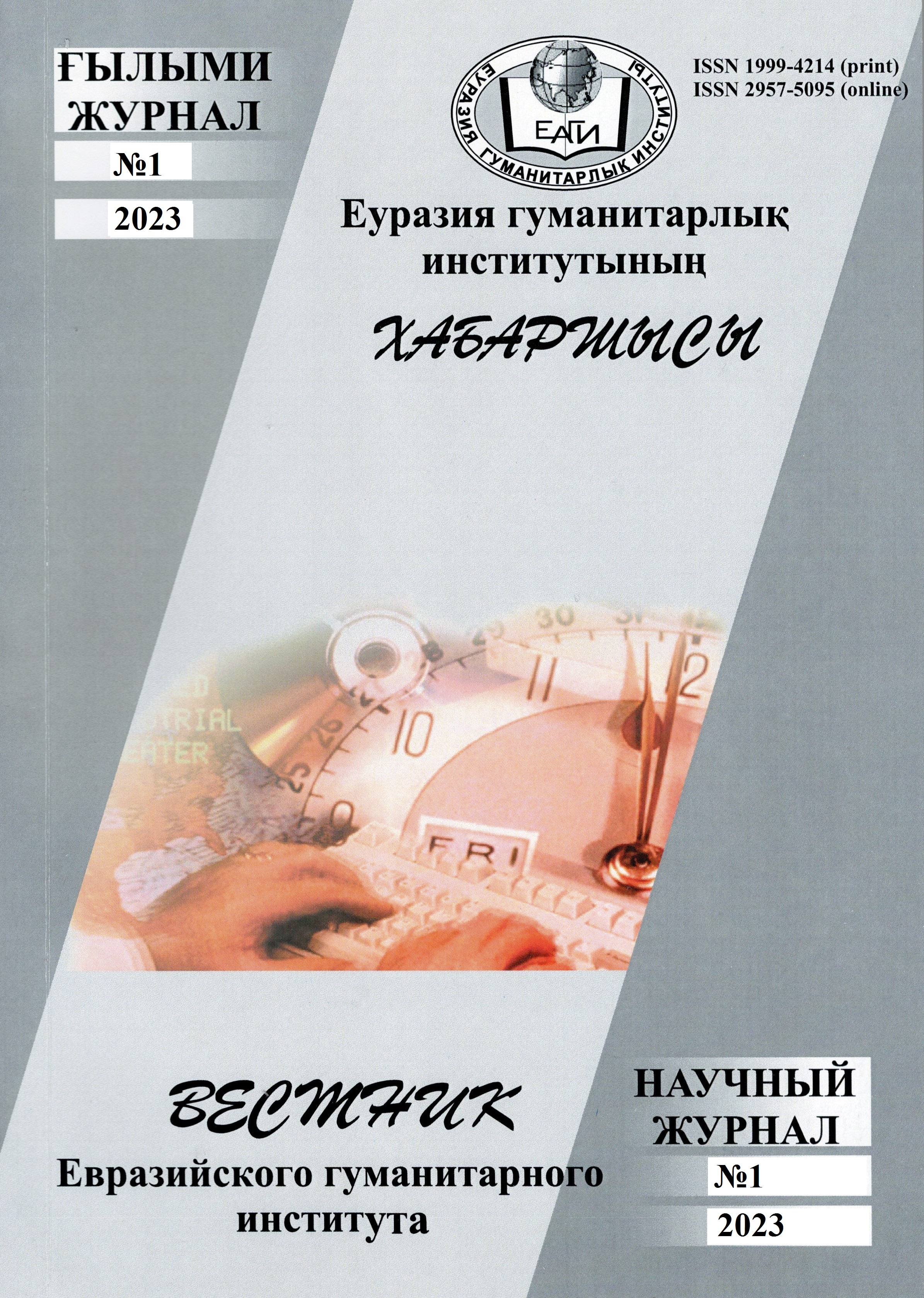"THE TEARS THAT FLOWED, THINKING ABOUT ALAS..." (BASED ON D. ASHIMKHANULY'S STORY "CRAZY WIND")
Keywords:
Didakhmet Ashimkhanuly, story, legend, national value, ideaAbstract
The article deals with the story "Crazy wind" by Didakhmet Ashimkhanuly, who crossed the sacred threshold of literature in the seventies and eighties and managed to find his place in a short time. The purpose of the article is to demonstrate the writer's skill, reveal the fruit of the writer's creative imagination, the novelty of the artistic tool in revealing the psychology of the character's personality. In addition, the personality of the protagonist, the cognitive and artistic place of the fictional story combined with the legend is proved. We tried to study the possibility of helping to reveal the educational value of the work with specific examples.
The work concludes the description of the character's personality in connection with nature, the search for the inner world of man, the contradictory feelings in man, the unity of the plot to describe the fate of the country, the glorification of human qualities.
Analyzing the success of the writer's work in the years of independence, focusing on his short stories, stories, journalistic essays, works in the genres of literary criticism, we see that his works are associated with the complex issues of modern society, such as social change, national values, national destiny. The research deals with the issues of national goals, mother tongue, spiritual immorality in the works of the author.
It is emphasized that the writer connects his creative skills with the emergence of new technologies (children talk not with their parents, but with the mirror, no one understands what they are talking about, that is, talking with the internet), which contributes to the development of fiction. Focusing freely on the issues of the inability to preserve the national mentality (a bull on a calf, girls on a boy, a naked knife, a demonic dance, a frantic state), social situation (tribal life, the fate of the nation, etc.), the writer tries to show the aspirations of the spiritually degenerate tribes for material wealth, trying to reveal the peculiarities of the mentality and national identity of each tribe, turning to small episodes that form the basis of everyday life of Obyr, Zhebir, Orman tribes. The details are interesting and different, thus enriching the ideological and artistic content of the story.


